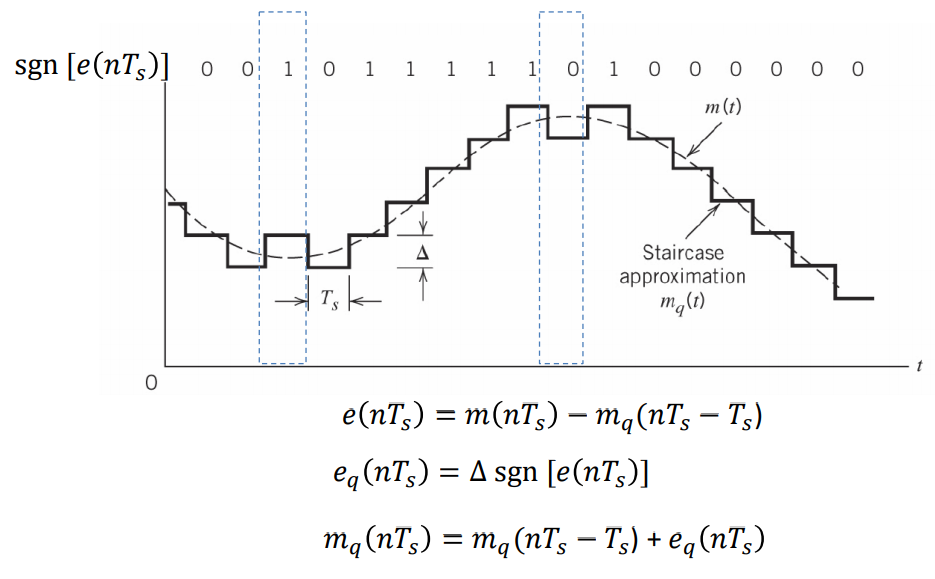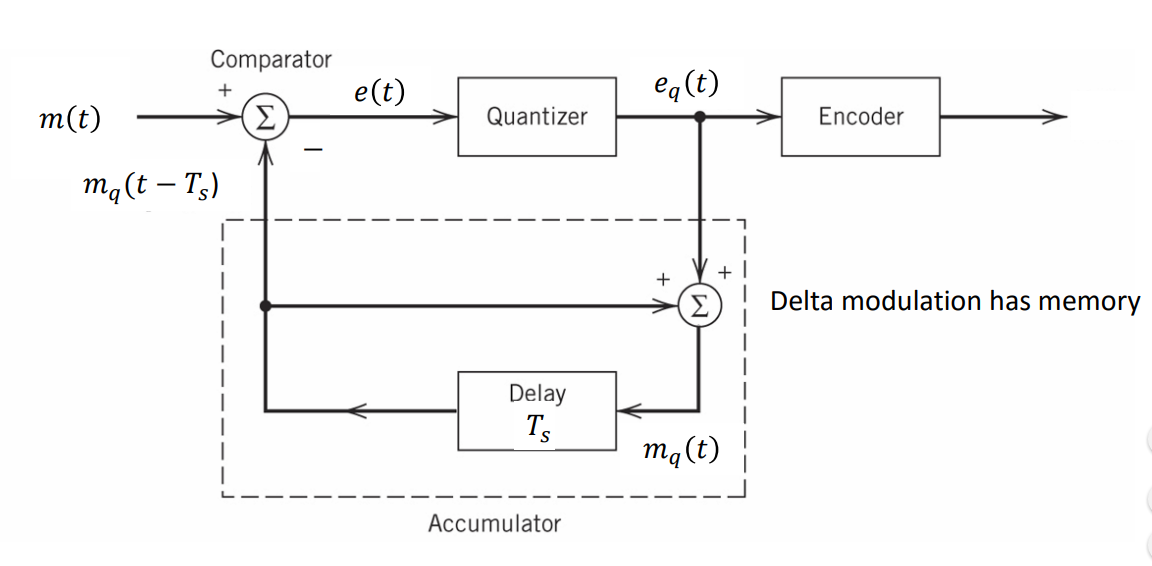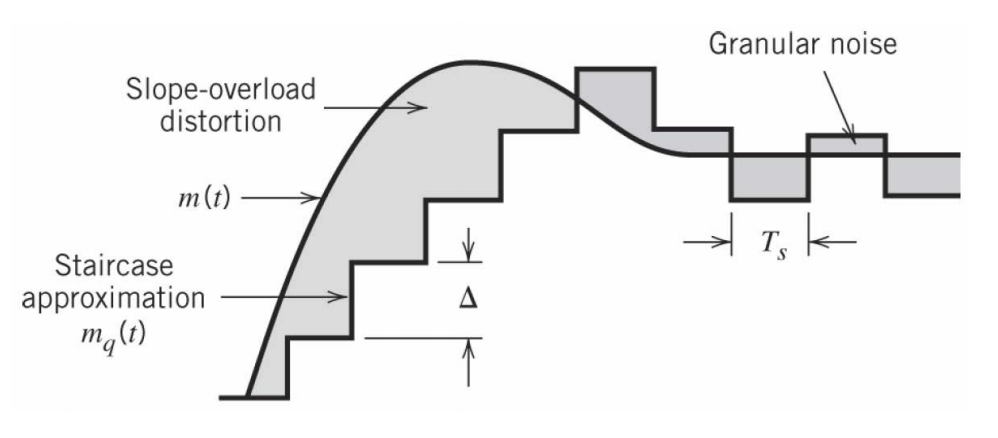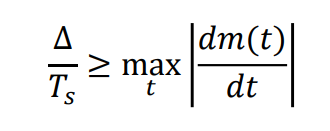| Line 8: | Line 8: | ||
[[File:22223.png]] | [[File:22223.png]] | ||
| + | |||
| + | • At receiver, the signal can be approximately reconstructed as | ||
| + | |||
| + | [[File:72223.png]] | ||
| + | |||
| + | • Two types of distortions: slope-overload distortion and granular noise | ||
| + | |||
| + | [[File:82223.png]] | ||
| + | |||
| + | • To avoid slope-overload distortion, we need to have | ||
| + | |||
| + | [[File:92223.png]] | ||
| + | |||
| + | |||
| + | • On the other hand, to reduce granular noise, it is desirable to have smaller ∆ | ||
| + | |||
| + | • Thus, there is a trade-off in selecting large or small step size ∆ to balance | ||
| + | between minimizing slope-overload distortion and granular noise | ||
| + | |||
| + | • One solution is to reduce 𝑇𝑇𝑠𝑠, but this increases transmission rate | ||
Revision as of 22:20, 2 December 2017
• Delta modulation
Another practical analog-to-digital conversion technique is delta modulation, whose output is a binary bit sequence, each consisting of either 0 or 1.
• Delta modulator at transmitter
• At receiver, the signal can be approximately reconstructed as
• Two types of distortions: slope-overload distortion and granular noise
• To avoid slope-overload distortion, we need to have
• On the other hand, to reduce granular noise, it is desirable to have smaller ∆
• Thus, there is a trade-off in selecting large or small step size ∆ to balance between minimizing slope-overload distortion and granular noise
• One solution is to reduce 𝑇𝑇𝑠𝑠, but this increases transmission rate






